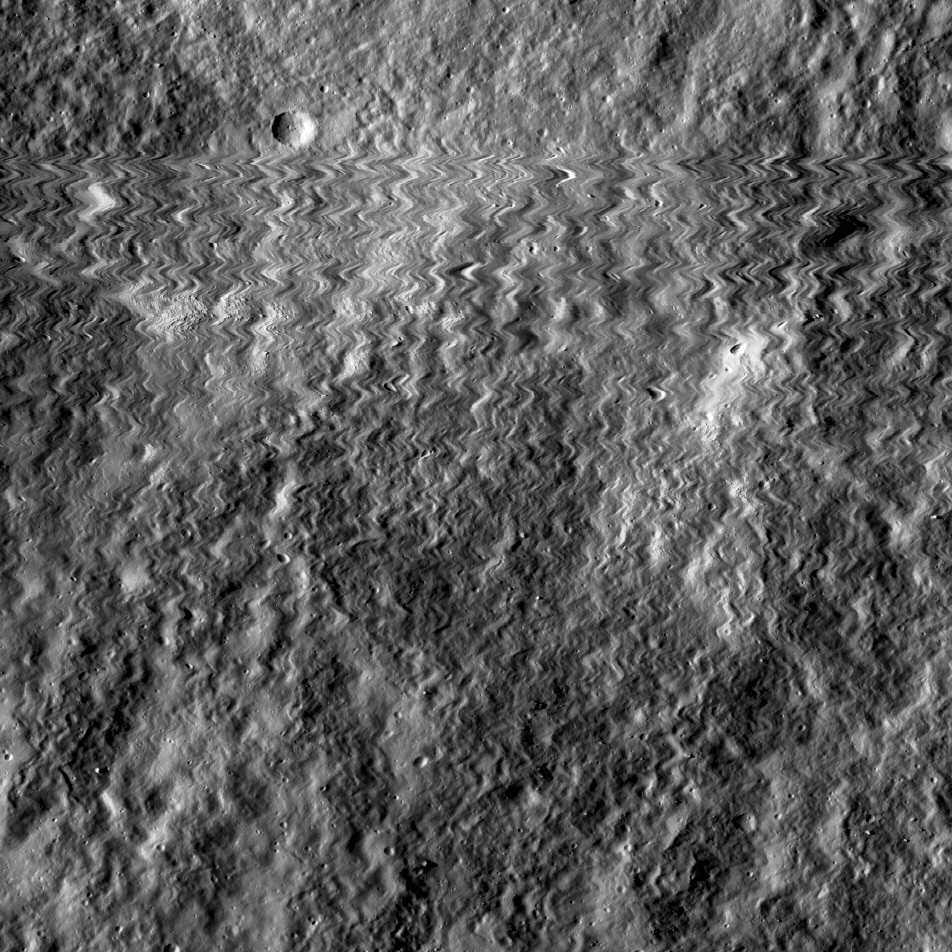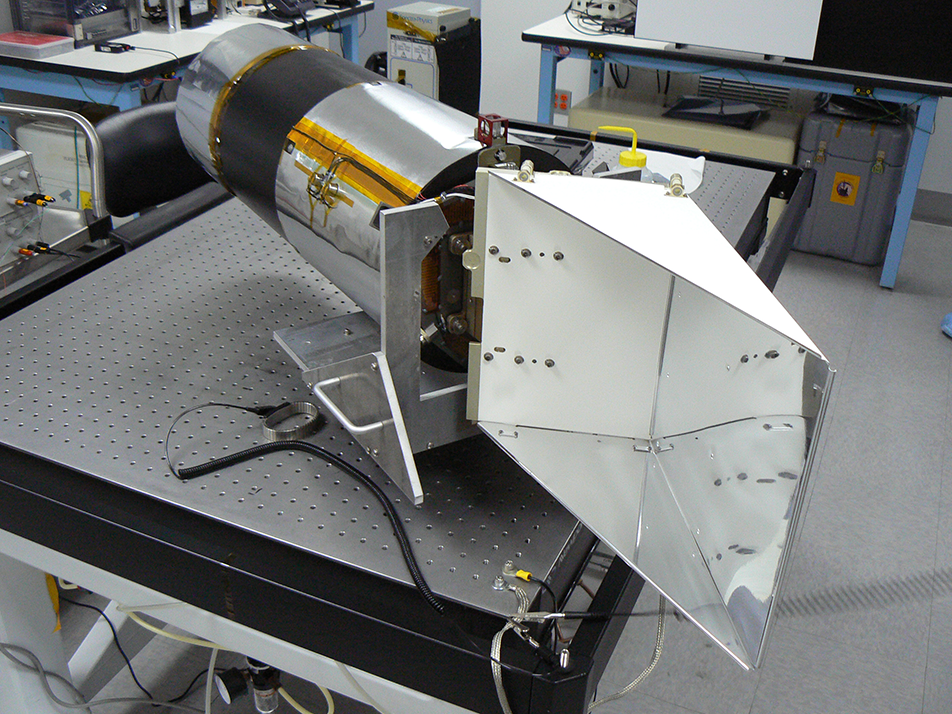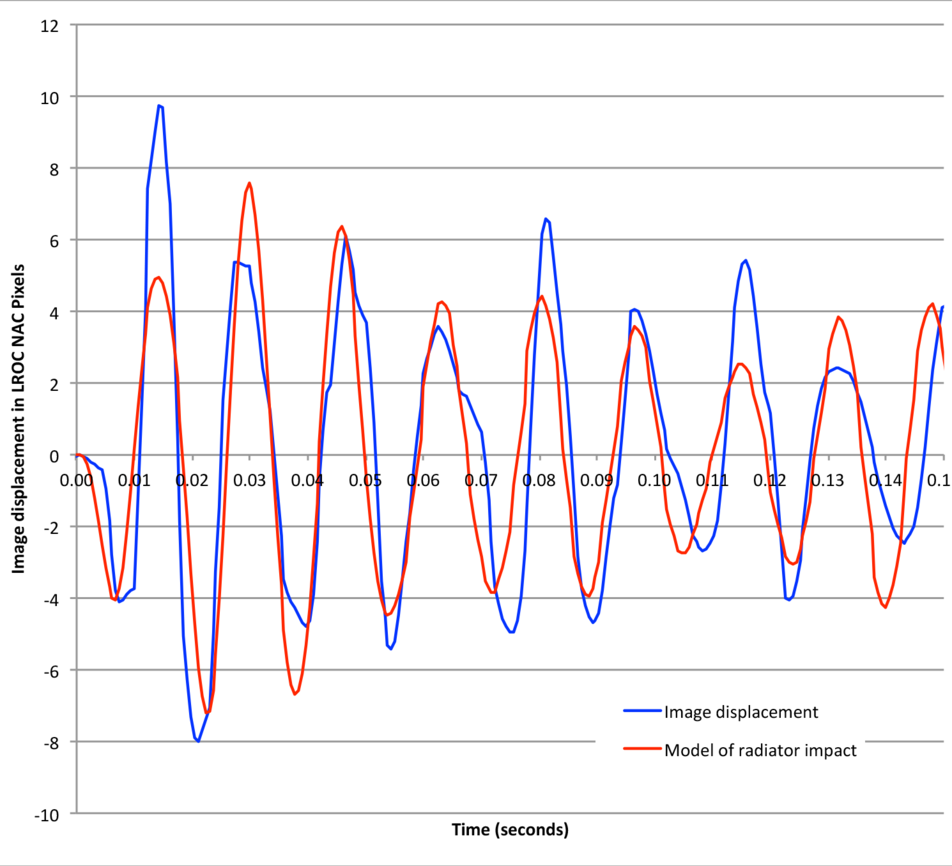
On October 13th, 2014, while the left LROC Narrow Angle Camera (NAC) was imaging, something very strange happened. The NAC builds up an image one line at a time: the first line is captured, the orbit of the spacecraft moves the camera relative to the surface, and then the next line is captured, and so on as thousands of lines are compiled into a full image. During this particular image, starting at line 22,616, there was a sudden and extreme cross-track oscillation of the camera with a magnitude of ~15 pixels (~0.008°) and a period of 27 lines. This motion results in the wild jagged appearance of the image seen above. The oscillation damps down over the next several hundred lines, becoming undetectable by line 25,000. The right NAC, meanwhile, shows almost no sign of this event, with only ~200 lines of slight cross-track distortion, and the first sign of distortion occurring about 20 ms after the distortion appears in the left NAC (21:19:02.4899 UTC line 22,647 ± a couple lines).
There were no spacecraft events (such as slews, solar panel movements, antenna tracking, etc.) that might have caused spacecraft jitter during this period, and even if there had been, the resulting jitter should have affected both cameras identically. The spacecraft pointing record (from star tracker cameras) shows only a very slight spike (0.0002°) in the cross-track orientation at the same time, but there is nothing obvious in any other direction.
Clearly there was a brief violent movement of the left NAC. The only logical explanation is that the NAC was hit by a meteoroid! How big was the meteoroid, and where did it hit? The physical properties and vibration modes of the NAC are very well known – during development a detailed computer model was made to ensure the NAC would not fail during the vibrations caused by the launch, which are severe. The computer model was tested before launch by attaching the NAC to a vibration table that simulates launch. The model was solid, both NACs survived the test, and launch.

Most of each NAC is sequestered inside the spacecraft structure, so only the leading edge of the baffle and the radiator are exposed to space, and thus are potential targets for impactors. From the detailed computer model, the LROC team ran simulations to see if we could reproduce the distortions seen the image. Assuming an impact velocity of 7 kilometers per second and a density 2.7 g/cm3, an impacting particle would have been 0.8 mm in diameter (~half the size of a pinhead). If the velocity was faster, then the particle would have been smaller, and if slower then larger.

For comparison, the muzzle velocity of a bullet fired from a rifle is typically 0.5 to 1.0 kilometers per second. So the meteoroid was traveling much faster than a speeding bullet. In this case LROC did not dodge a speeding bullet, but rather survived a speeding bullet!
It is somewhat amazing that this event was captured in a NAC image. LROC typically images only during daylight, and then only 10% of the day. So to begin with there was only a 5% chance of an impact occurring during image acquisition. I wonder how many times LROC and LRO have been hit by other meteoroids? Maybe there is another NAC image recording a similar event and we have not found it yet?
Regardless, LROC was struck and survived to keep exploring the Moon - many thanks to Malin Space Science Systems for a robust camera design!
Published by Mark Robinson on 26 May 2017